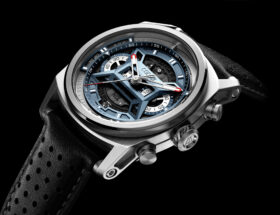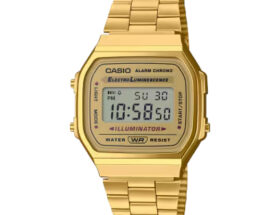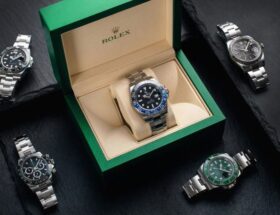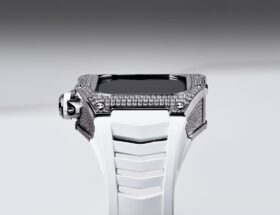When it comes to luxury watches, two names often stand out prominently in the minds of enthusiasts and collectors: Rolex and Patek Philippe. These Swiss watchmaking giants have been crafting exceptional timepieces for well over a century, and each brand has its unique allure and heritage. Let’s delve into a comparison of Rolex and Patek Philippe, exploring what sets them apart in the world of horology.
ALSO, READ MORE POSTS ON: what is the cheapest Patek Philippe watch: 5 cheapest Patek Philippe
Table of Contents
Which is better Patek Philippe vs Rolex
In the world of luxury watches, two names consistently shine the brightest: Rolex and Patek Philippe. These horological powerhouses have captivated watch enthusiasts and collectors for generations. While both brands exude prestige and craftsmanship, they do so in unique and distinct ways.
In this comparison, we’ll take a closer look at Rolex and Patek Philippe, exploring their histories, styles, and what makes each of them a standout choice in the realm of high-end timepieces. Whether you’re an adventurer at heart or someone who appreciates timeless elegance, there’s a watch for you in this ultimate face-off.
History And Legacy
Let’s look at the history and legacy of both watches:
Rolex: A History of Innovation and Adventure
Rolex, founded in 1905 by Hans Wilsdorf and Alfred Davis, has left an indelible mark on the world of watchmaking. The brand’s early innovations include the development of the first waterproof wristwatch, the Rolex Oyster, in 1926. This groundbreaking achievement not only revolutionized watch design but also set the stage for Rolex’s reputation for durability and reliability.
In the 1950s, Rolex introduced iconic models like the Submariner, designed for diving, and the GMT-Master, tailored for aviation. These watches became staples for professionals and adventurers alike. Rolex’s association with exploration reached its pinnacle when Sir Edmund Hillary and Tenzing Norgay wore Rolex Oyster Perpetual watches to conquer Mount Everest in 1953.
The brand’s commitment to precision and performance led to the creation of the first self-winding movement with a perpetual rotor, further solidifying Rolex’s status as a leader in the industry. Today, Rolex’s rich history continues to be celebrated, with each watch bearing the legacy of innovation and a spirit of adventure.
ALSO, READ MORE POSTS ON: Patek Philippe Watches: Most Expensive Patek 2023
Patek Philippe: A Heritage of Elegance and Artistry
Patek Philippe, established in 1839 by Antoine Norbert de Patek and François Czapek, followed by the acquisition by Adrien Philippe in 1845, boasts a heritage steeped in artistry and craftsmanship. The brand quickly gained recognition for its intricate pocket watches, many of which graced the wrists of European royalty and dignitaries.
One of Patek Philippe’s most renowned creations is the Calatrava, introduced in 1932. This timepiece exemplified the brand’s dedication to timeless design and elegance. Patek Philippe also gained acclaim for its complicated watches, including perpetual calendars, minute repeaters, and celestial complications.
What truly sets Patek Philippe apart is its commitment to tradition and heritage. The brand’s famous slogan, “You never actually own a Patek Philippe. You merely look after it for the next generation,” underscores its dedication to crafting watches that transcend generations.
In the world of watchmaking, Rolex and Patek Philippe have forged two distinct paths. Rolex has etched its name in the annals of exploration and rugged performance, while Patek Philippe remains an icon of timeless elegance and meticulous craftsmanship. Both brands, with their rich histories and legacies, continue to define the pinnacle of luxury watchmaking.
ALSO, READ MORE POSTS ON: History and Legacy of Rolex vs Cartier: Best Watches
Craftsmanship And Innovation
Below are the two different craftsmanship and innovation:
Rolex: The Paragon of Precision and Durability
Rolex has long been celebrated for its unwavering commitment to craftsmanship and innovation. The brand’s dedication to precision timekeeping is evident in every timepiece it produces. Rolex’s watches are known for their robust and enduring construction, making them suitable for both the boardroom and the great outdoors.
One of Rolex’s most significant innovations is the Oyster case, introduced in 1926. This hermetically sealed case design marked a groundbreaking moment in watchmaking, as it made Rolex the pioneer in creating waterproof and dustproof wristwatches. The Oyster case not only protected the watch movement from environmental elements but also set a new standard for watch reliability.
Additionally, Rolex’s dedication to in-house manufacturing ensures that every aspect of a Rolex watch, from the movement to the bracelet, is crafted with meticulous attention to detail. This level of control over production guarantees exceptional quality and consistency.
Patek Philippe: Artistry and Complication Mastery
Patek Philippe is synonymous with artistry and the mastery of horological complications. The brand’s commitment to crafting timepieces that are both aesthetically stunning and mechanically intricate is second to none.
One of Patek Philippe’s crowning achievements is its expertise in crafting complicated watches. The brand is known for creating some of the world’s most intricate timepieces, including perpetual calendars, minute repeaters, and celestial complications that track astronomical phenomena with unparalleled precision.
What sets Patek Philippe apart is its tradition of handcraftsmanship. Each watch is painstakingly assembled and finished by skilled artisans, ensuring that every detail, no matter how small, meets the brand’s exacting standards. This level of craftsmanship results in watches that are not only accurate but also objects of beauty.
Furthermore, Patek Philippe is committed to preserving its heritage and tradition. The brand’s dedication to creating watches that can be passed down through generations speaks to its long-term vision of horological excellence.
Iconic/Best Collections
In the realm of horology, two illustrious names stand out—Rolex and Patek Philippe. These legendary Swiss watchmakers have each carved their unique path to distinction, enchanting enthusiasts and collectors around the world. As we delve into the captivating world of Rolex versus Patek Philippe, we embark on a journey through their histories, their iconic timepieces, and the enduring legacy that has made them synonymous with luxury and precision in the art of watchmaking.
Rolex Iconic Collections:
- Rolex Submariner: The Submariner is an iconic dive watch known for its rugged design and water resistance. It has been a favorite among divers and watch enthusiasts for decades.
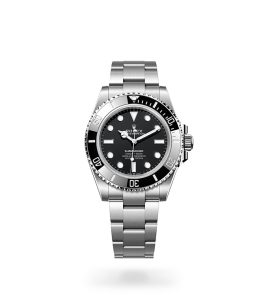
- Rolex Daytona: The Daytona collection is famous for its association with motorsports and features chronograph functions. Its timeless design and precision make it a highly coveted model.
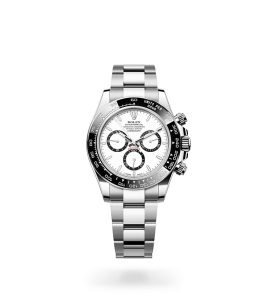
- Rolex Datejust: The Datejust is a classic dress watch known for its elegant yet versatile design. It introduced the date window, magnifying Cyclops lens, and the iconic Jubilee bracelet.
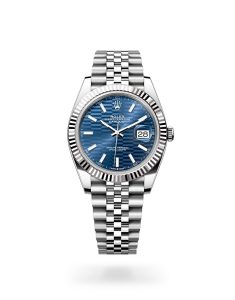
Patek Philippe Iconic Collections:
- Patek Philippe Calatrava: The Calatrava is the epitome of timeless elegance. Its minimalist design and exquisite craftsmanship have made it one of Patek Philippe’s most iconic and recognizable collections.
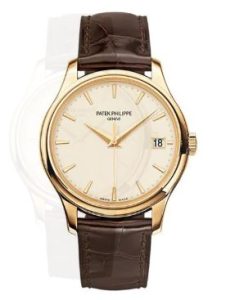
- Patek Philippe Nautilus: The Nautilus collection is characterized by its sporty yet sophisticated design. Created by legendary watch designer Gerald Genta, it has a distinct porthole-inspired case shape.
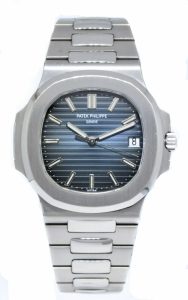
- Patek Philippe Complications: Patek Philippe is renowned for its complicated watches, including perpetual calendars, minute repeaters, and world timers. These intricate timepieces showcase the brand’s mastery of horological complications.
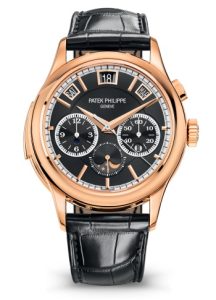
These collections from Rolex and Patek Philippe represent the pinnacle of watchmaking in their respective styles, catering to a diverse range of tastes and preferences among watch enthusiasts.
Materials And Design
Both watches are made with different materials and designs. However, below are the quality materials made of:
Rolex: Engineering Excellence with Iconic Design
Rolex is renowned for its use of high-quality materials and iconic, instantly recognizable design. The brand’s commitment to engineering excellence is reflected in its choice of materials and design philosophy.
- Materials: Rolex predominantly uses stainless steel, gold, and platinum for its watches. Their proprietary 904L stainless steel offers excellent corrosion resistance and durability. Precious metals like 18k gold and platinum are precisely alloyed in-house for the desired luster and strength.
- Design: Rolex watches are known for their clean, functional, and timeless designs. The iconic Oyster case, dating back to 1926, combines form and function for water resistance while maintaining an elegant appearance. Instantly recognizable design elements include Mercedes hands, a Cyclops date window, and fluted bezels.
- Innovation: Rolex, while maintaining a classic look, continually innovates with materials. For example, introducing Cerachrom ceramic bezel inserts offers scratch resistance and vibrant colors. Additionally, Rolex incorporates Paraflex shock absorbers in its movements for enhanced durability and robustness.
Rolex’s design and material choices revolve around creating watches that are not only durable but also timeless in their appeal.
Patek Philippe: Exquisite Craftsmanship and Timeless Elegance
Patek Philippe is similar with exquisite craftsmanship and timeless elegance. The brand’s choice of materials and design approach reflects its commitment to creating works of art.
- Materials: Patek Philippe uses premium materials like 18k gold, platinum, and high-quality stainless steel. Their diamonds and gemstones meet strict quality standards, with a focus on color, clarity, and cut.
- Design: Patek Philippe watches are known for their graceful and classic designs, such as the minimalist elegance of the Calatrava. The brand’s meticulous attention to detail extends to hand-finished movements, featuring intricate engravings and Geneva striping.
- Innovation: Patek Philippe’s innovation shines through the complexity of its movements, known for creating intricate complications like perpetual calendars and minute repeaters. Despite traditional appearances, the brand pushes the boundaries of technical sophistication.
- Commitment: Patek Philippe’s choices in materials and design showcase a dual commitment to aesthetics and technical excellence in watchmaking.
In summary, Rolex prioritizes engineering excellence and practical, iconic design, utilizing top-quality materials for durability. In contrast, Patek Philippe emphasizes exquisite craftsmanship, timeless elegance, and intricate complications. These distinct material and design philosophies have solidified both brands’ esteemed positions in the world of luxury watchmaking.
Timekeeping Precision
Rolex offers precision optimized for real-world scenarios, while Patek Philippe elevates precision to the level of art, particularly in its complex watchmaking creations. However, below are better explanations:
Rolex: Precision for Practicality
Rolex is known for its exceptional timekeeping precision, designed primarily for practical use. Rolex watches are renowned for their reliability and accuracy in everyday situations, making them trusted companions for professionals and adventurers. The brand’s movements are robust and highly resistant to variations in temperature and magnetic fields, ensuring consistent timekeeping under various conditions.
Patek Philippe: Precision as an Art Form
Patek Philippe takes precision to the highest echelons of horology, treating it as an art form. The brand’s commitment to accuracy goes beyond practicality, with a focus on achieving the utmost precision in intricate complications such as perpetual calendars and minute repeaters. Patek Philippe watches are finely adjusted and meticulously crafted for precision that borders on perfection, making them coveted by connoisseurs who appreciate both technical mastery and accuracy.
Popularity And Brand Recognition
In the world of luxury watches, popularity, and brand recognition play a pivotal role. These elements reflect a brand’s standing in the market and influence consumers’ choices and perceptions. In this exploration, we delve into how two iconic watch brands, Rolex and Patek Philippe, differ in terms of their popularity and the recognition they command within the realm of horology.
Rolex:
Rolex enjoys widespread popularity and boasts exceptional brand recognition. It is renowned for its iconic status and is often considered a symbol of success and achievement. Rolex’s marketing and association with celebrities have contributed to its global recognition.
Patek Philippe:
Patek Philippe is also highly esteemed but tends to cater to a more niche and discerning clientele. While it may not have the same level of mass recognition as Rolex, it is celebrated among connoisseurs and watch enthusiasts for its craftsmanship and heritage.
In summary, Rolex is widely recognized and celebrated for its iconic status, while Patek Philippe, while not as mainstream, enjoys strong recognition and admiration among those who appreciate fine watchmaking.
Investment Value and Resale Market
Rolex:
Rolex watches are often seen as solid investments, known for their ability to retain value and even appreciate over time. Certain vintage and limited-edition Rolex models can command significant premiums in the resale market. The brand’s widespread popularity and strong demand contribute to its solid investment potential.
Patek Philippe:
Patek Philippe is renowned for its exceptional investment value. The brand’s watches, particularly those with rare complications or limited production, tend to appreciate significantly in value over the years. Patek Philippe watches are often considered blue-chip investments in the watch world, with a well-established track record of holding and increasing their value in the resale market.
In summary, both Rolex and Patek Philippe have a strong reputation for being valuable investments, with certain models appreciating significantly in the resale market. However, Patek Philippe, with its emphasis on complications and heritage, often commands higher premiums in the collector’s market.
Conclusion
Rolex and Patek Philippe watches are both good, they have both good quality and stand out as the top best watches in the industry, which watch enthusiasts and collectors admire. No one can decide which is better, you go for what you want while choosing the watches of your choice. But if you need to go into watches and know which is better, you need to first know its value and investment plan on how long it can last in the market industry before deciding. All watches are good but know more about them before you decide.
ALSO, READ MORE POSTS ON: How To Fix Apple Watch Stuck On Apple Logo Even After A Hard Reset



